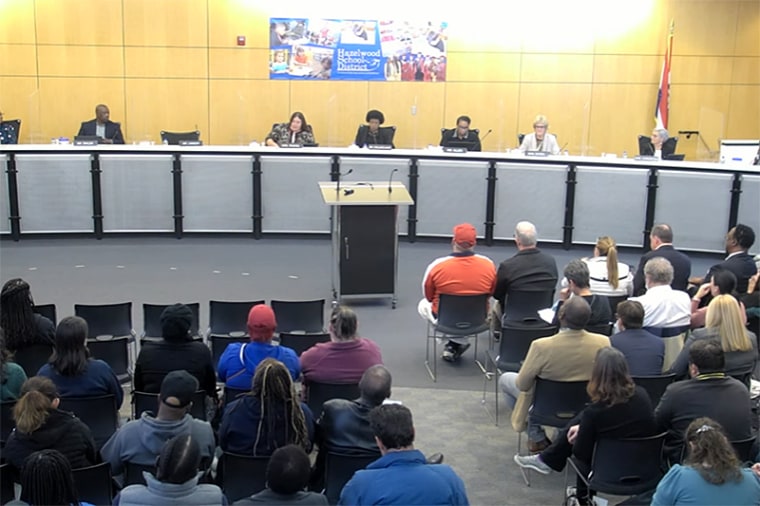Students at a Missouri elementary school where "unacceptably high" levels of radioactive waste were found will switch to virtual learning, the school board announced Tuesday.
At a packed meeting Tuesday evening, the Hazelwood School District’s board told concerned parents that Jana Elementary School in Florissant will switch to virtual instruction Monday, with plans to redistrict students to other area schools after the Thanksgiving break.
The board apologized to parents and said it planned to work with legal counsel to ensure hazardous material is cleaned up.
In emotional speeches, parents thanked board members for taking steps to protect their kids — while expressing anger at a lack of transparency from the school district. Many said they found out about the radioactive waste in their children’s school from Facebook posts or news reports.
“I can get a call about a crayon or a pencil, but I can’t get a call” about nuclear waste, said Kimberly Anderson, whose three grandchildren attend Jana Elementary.
Environmental investigation consultants reported last week that radioactive lead more than 22 times the expected level was found in the Jana Elementary School kindergarten playground and that more than 12 times the expected level was found by the school’s basketball courts.
Jana Elementary is in the flood plain of Coldwater Creek, which was contaminated during the 1940s and ’50s when radioactive waste from weapons production for World War II was dumped nearby.
The Army Corps of Engineers has been cleaning up the creek for more than two decades. It has been testing the area around the creek for years, but it never tested inside or within 300 feet of the elementary school.
Documents obtained this year by student safety advocates showed low-level contamination in the banks of the creek close to the school, based on the Corps of Engineers’ 2018 tests. The school board was presented with the findings in June, according to The Associated Press.
Last week’s independent report from Boston Chemical Data Corp., which marked the first time samples had been taken from inside Jana Elementary, confirmed parents’ worst fears. It showed that radioactive levels were most likely posing an “unacceptably high risk to the children.”
The Army Corps of Engineers downplayed the findings.
“The Boston Chemical Data Corp. report is not consistent with our accepted evaluation techniques and must be thoroughly vetted to ensure accuracy,” said Phil Moser, a program manager overseeing the investigation and the cleanup of sites that were part of the country’s early atomic energy and weapons program.
“Any contamination posing a high risk or immediate threat would be made a priority for remediation,” his statement continued.

Hours before Tuesday’s meeting, Jana PTA President Ashley Bernaugh said she hoped community members would support the school board.
“We know our school district didn’t make this waste,” she said, adding that she blames the Army Corps of Engineers and the Energy Department for not having taken steps to test and clean up the school.
The student population of Jana Elementary, just outside St. Louis, is about 80% Black. One father pleaded with the school board to view the contamination as an urgent environmental justice issue.
Parents said they and others they know in the community had been diagnosed with rare cancers or faced other serious health problems that they felt were the direct results of their exposure to radioactive waste.
Karen Nickel, a co-founder of the environmental activist group Just Moms STL, who attended school in the district, told the board she has several autoimmune conditions. She thanked board members for not keeping students inside Jana Elementary.
“No one protected me. No one stood up for me,” she said, her voice breaking. “The school district, the board, they didn’t know. They couldn’t stand up for me, and you guys are saving lives. You’re going to save lives.”
